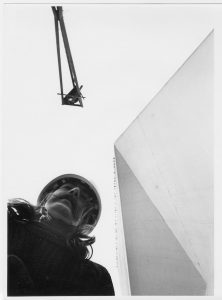The Canadian photographer finds a country fundamentally unsettled by economic and political trauma, but hope is far from extinguished…
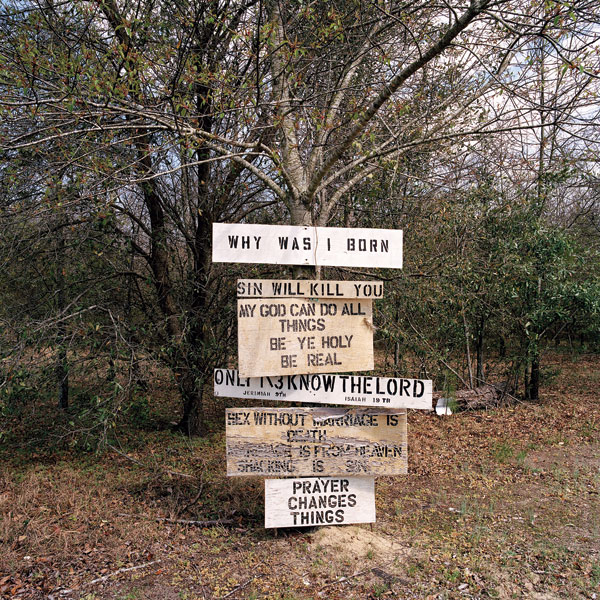
Phil Bergerson is seated in a gallery just off the bustle of the Gray’s Inn Road in London, reflecting on whether he could ever settle in the US, the country whose idiosyncrasies he’s spent the last two decades documenting. The Canadian photographer is surrounded by images from his new book American Artifacts, the follow-up to 2004’s Shards of America. The Stars and Stripes feature of course, alongside crumbling religious iconography and hastily scribbled slogans that speak of a new vulnerability in the American psyche.
“I could live there, but there are two main differences between Canadians and Americans – and Brits too – two things that really change your attitude: guns and healthcare,” he says. “I was in Texas. Four trucks pull up, full of guys having a good time. I’m watching this and realising every one of those trucks probably has three guns in the back. I’m there by myself – if they wanted to, they’ve got me. That’s a different pressure. I have elderly relatives in Florida who have pensions from the government and the military. They think healthcare’s fine, but there are six million black women in poor neighbourhoods who are having children and never go to the doctor because they can’t afford it. People are struggling.”
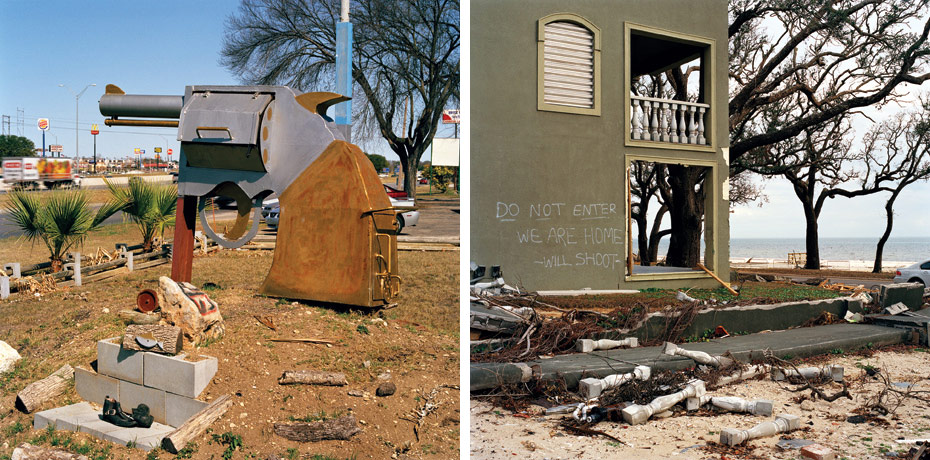
Since he began photographing the US in 1990 – he’s been exhibiting internationally for 35 years and is Professor Emeritus at Ryerson University in Toronto – Bergerson has witnessed the American Dream being twisted and shaken by world events and political corruption and infighting at home. That sense of entitlement, that unshakable belief that “Your children will be able to do better and you’ll be able to do better than your parents, and you can become the President of the United States” as Bergerson neatly surmises it, has been left twitching by the side of the road, barely alive. I chuckle when I imagine the British being raised on the belief that it’s possible for ‘anyone’ to become Prime Minister.“It’s cyclical I think,” says Bergerson. “When Bush was in, it galvanised everybody to say something. When Obama was coming in we were all so hopeful that maybe he could change our societies by changing theirs in a positive way. I still believe in him as being a good guy who’s intellectually astute. I’m glad he’s there. But he’s shackled by the system. The super-rich really are controlling things. People are starting to question not just authority, but how authority got authority in the first place. In other words, how were we duped?
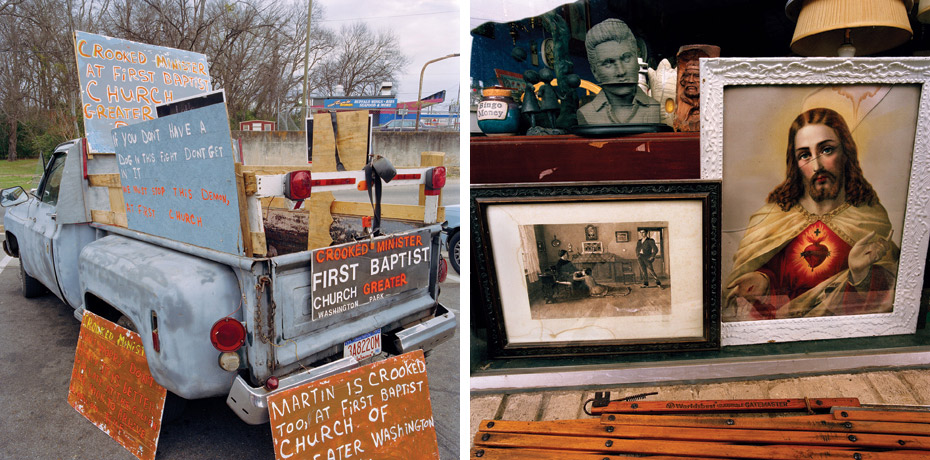
“I was in a Walmart in a small town and on the wall were all these individual portraits of young military men. Some were dead. Some were kids of the cashiers. The consensus was, ‘It’s the worst thing we ever did. We didn’t have the money to send them to university so we suggested they join up for the weekend stint’. And they did. But once you sign up, if there’s the need to go to war they pull you in.”
That feeling of being duped also extends to religion. “You have more and more people leaving Christianity, and the other religions –especially in the Midwest – are gaining strength,” he says. “But things are being presented about different faiths out in public that are racist. You’re realising something is showing its ugly head here, which can be good because you can see it and maybe change it. I see the positive in the things I’m picturing because people are often trying to fight against something.”
Shot largely in the transitional zones of cities, where the nouveau riche have moved in to take advantage of cheaper rents, and small towns across the country, Bergerson’s images hark back to an illustrious lineage of American street photography that includes Robert Frank, Lee Friedlander and Walker Evans. They burst with irony: witness a brief glimpse of the real mountain range behind a painted scene in a shot taken in Pocatello, Idaho in 2007. It’s difficult to believe some haven’t been manipulated, though Bergerson insists not. People are a notable absence – aren’t they American Artifacts too?
“When I first started the project I did photograph people but as I moved forward I realised the pictures without people were saying more than the portraits,” he says. “Once I actually grounded it in a particular person, as opposed to an imagined person, it changed things. I spoke to a lot of street people. The people who struggled with the economic crises of 2008, they’re more plentiful but they weren’t the people I was encountering. They’re all trying to figure out what happened to them and how to recover from it.”
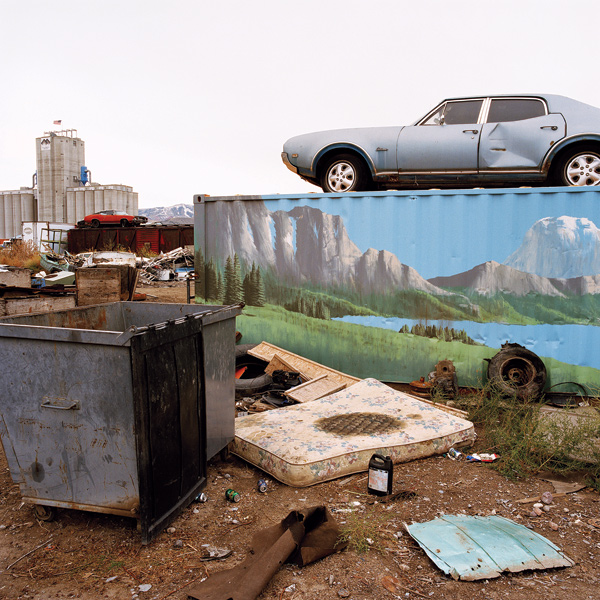
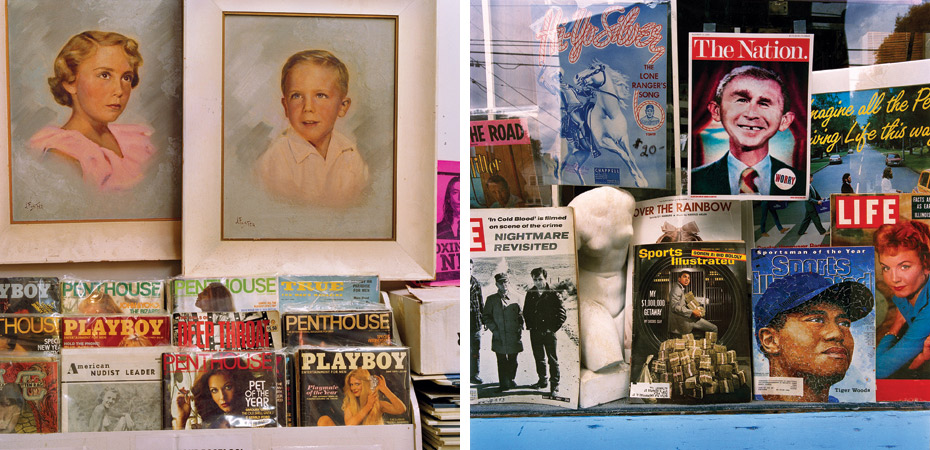
So what’s the answer? A return to real American values, not those pedalled by religious zealots or the political right, would be a good start. “A grassroots movement towards rejuvenation of the spirit of America needs to happen,” says the photographer, enthused. “In my first book I quote Salman Rushdie, who says America’s the only state that has declared it’s statehood by saying the citizens deserve the pursuit of happiness. Everybody’s striving to be happy. They believe it’s something that’s owed to them.
“Then the question is, what is this happiness? That’s where I see the American Dream splitting: the majority of the population have pursued consumerism with a vengeance, that’s what’s going to make them happy. The minority group are just trying to find out what it is to be human, learn more, go to school more and study things, the spiritual stuff… the other group have lost that part I think.”
Confidence may be low, but the ‘American Dream’ is fundamentally about hope – and that’s the last thing to be extinguished in the good ol’ US of A.

